Ever considered how strategizing an SEO campaign could be akin to a photographer gearing up for a photoshoot? It's a fitting comparison. Photographers scrutinize their subjects, survey locations, employ the correct equipment, and devise meticulous plans to ensure all elements harmonize perfectly. Their ultimate aim is to snap the ideal picture and narrate the story in the most enthralling manner. After all, striking images are crucial to attracting an audience, aren't they?
These principles are equally applicable to search engine optimization (SEO). Identifying your target audience, performing keyword research, crafting high-quality content, and optimizing your website are tasks that necessitate meticulous planning. Understanding the right techniques and deploying them strategically is the secret sauce to attaining triumphant results from your SEO agency.
However, SEO doesn't stop there as search engine algorithms continually evolve, making it a dynamic win-lose situation. According to a study, Google ranks a website using more than 200 factors. Your organic traffic could take a big hit from a single update if you fail to keep up with the latest trends. That said, an extra layer of defense or preventative action is your best solution to minimize the risk of dropping off from the search engine results pages (SERPs).
Preventive SEO
Preventive is more or less the same as defensive SEO. It's a proactive approach that ensures your website is ready to face the ever-changing search engine landscape. The goal is to combat penalties, withstand algorithm updates, and be prepared for other potential risks before they hurt your ranking performance. If ‘all bases belong to you’ you win the game.
Here are some preventive and defensive SEO tactics to avoid these negative consequences.
1. Refine and use relevant keywords
Have you ever searched for something online and found yourself lost in a sea of irrelevant search results? Sifting through pages that don't match what you're looking for can be frustrating and time-consuming.
The same thing goes for search engine spiders, which need to determine whether a website is worth showing in the SERPs. Think of this, over 9 billion searches are done daily. If you don't use the right keywords, your website won't get noticed. That's why it's important to use relevant phrases or words that match the user intent. Aside from relevancy, you must also consider the following:
- Search volume
- Competition level
- Keyword difficulty
These factors can help you target the right audience and maximize your SEO effort. Remember to monitor your keyword performance over time and make adjustments when necessary. Use tools like Ahrefs keyword tool or Google keyword planner to find the best outcomes for your website.
[caption id="attachment_21284" align="aligncenter" width="1888"]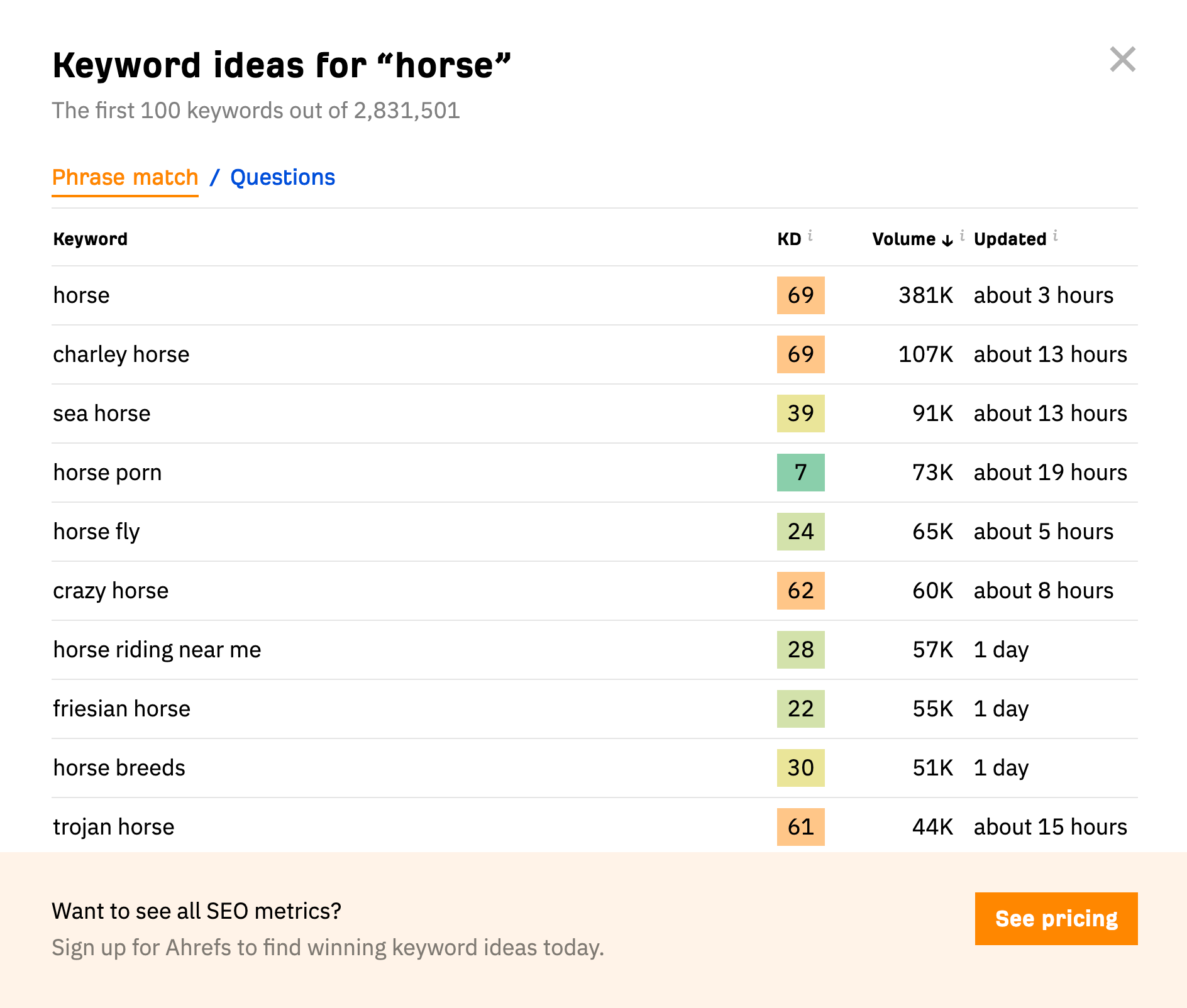 Image Source: Ahrefs[/caption]
Image Source: Ahrefs[/caption]
2. Keep your content fresh
A report from Search Engine Journal revealed that Google favors websites that frequently update their content. Of course, search engine crawlers are constantly looking for fresh and relevant content to display in their results. It's like presenting a state-of-the-art picture instead of the same old one to your audience.
Regularly producing valuable content shows search engine bots that you're actively engaging with your customers and providing them with new information. This can help your website get indexed faster and appear on the first page of search results. It can also attract more readers, boost engagement, and develop your brand reputation. Here's a quick overview of the different types of content you can explore:
- Blog posts
- Case studies
- Tutorials or how-to guides
- Infographics
- Webinars
- Podcasts
Updated content isn't only your shield when algorithm updates come flooding in but also attracts prospects and will eventually lead to conversions.

3. Monitor your link profile
Backlinks are like a highway to the search engine world. They can direct traffic to your website and boost your website's authority. These SEO elements signal to search engines that the content on the linked website is credible and worth referencing. But sometimes, these links could cast a shadow on your site.
According to Ahrefs, Google detects around 40 billion spammy websites or pages daily. That's a vast amount of malicious links circulating the internet. It pays to stay vigilant and monitor your backlinks diligently to ensure you're not violating any of the search engine's guidelines. You may not know you're linked to a site that's no longer active, or the resource changed its status without you knowing—from dofollow to nofollow—which can drastically affect your ranking.
So, if you think you're doing all the SEO practices, but your website still drops down in SERPs or even gets deindexed, your link profile could be the culprit. Follow these tactics to prevent this from happening:
- Analyze your backlinks and disavow links from low-quality websites.
- Submit a disavow file to Google.
- Redirect to another website.
- Avoid paid links and link exchange schemes.
- Use a reliable link-monitoring tool to get an overview of your link sources or find any unnatural links.
- Focus on building high-quality backlinks from trustworthy websites with a good domain authority (DA) score.
Staying proactive with your link building process can help you build a healthy backlink profile that won't put you at risk for penalties. Don't let a few bad links ruin all the effort you put into your SEO campaign. So, keep your backlinks in check, clean them up, and you'll be more prepared to face algorithm updates. You can check your backlink profile with tools such as Ahrefs.
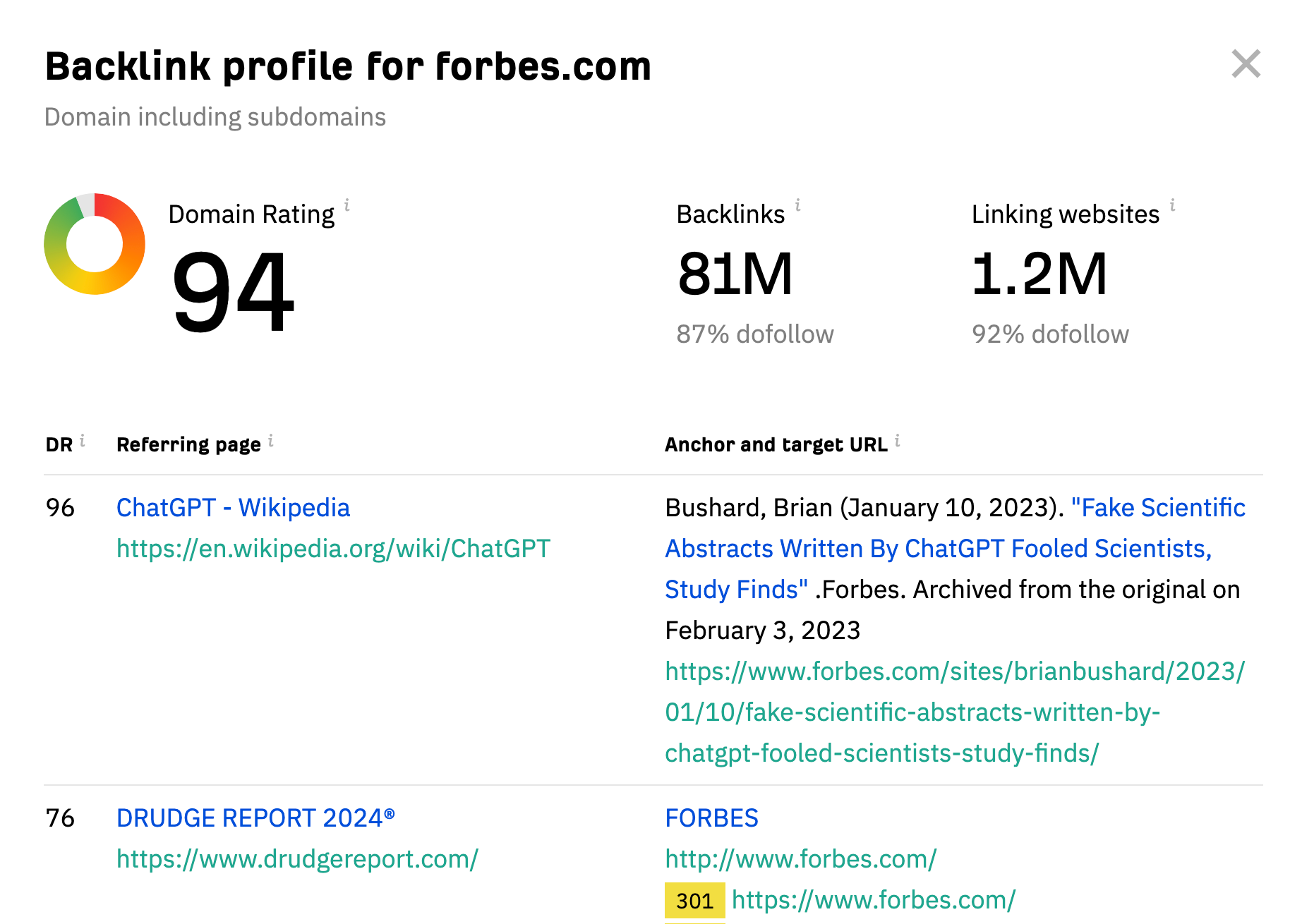
4. Improve your website's loading speed
Consumers expect faster loading speeds from websites. Who would want to stay long on a slow-loading website? Now, this doesn't only affect user experience but also your SEO ranking. A study shows that 40% of web users will abandon a website if it takes over three seconds to load. That's a considerable margin of potential customers to lose.
Fortunately, there are simple steps you can take to optimize your website's loading speed. Here are they:
- Compress images and videos.
- Eliminate render-blocking resources.
- Use server-level caching to store data from your visitor's web browser.
- Minify hypertex markup language (HTML), cascading style sheet (CSS), and JavaScript.
- Leverage browser caching for repeat visitors.
- Enable Gzip compression.
- Upgrade to a faster web hosting plan.
- Invest in content delivery networks (CDN).
Consider these steps to improve your website's loading speed—or else, it could slow down the progress of your objectives. You can also use PageSpeed Insights to check your website's performance and test it for further improvements.
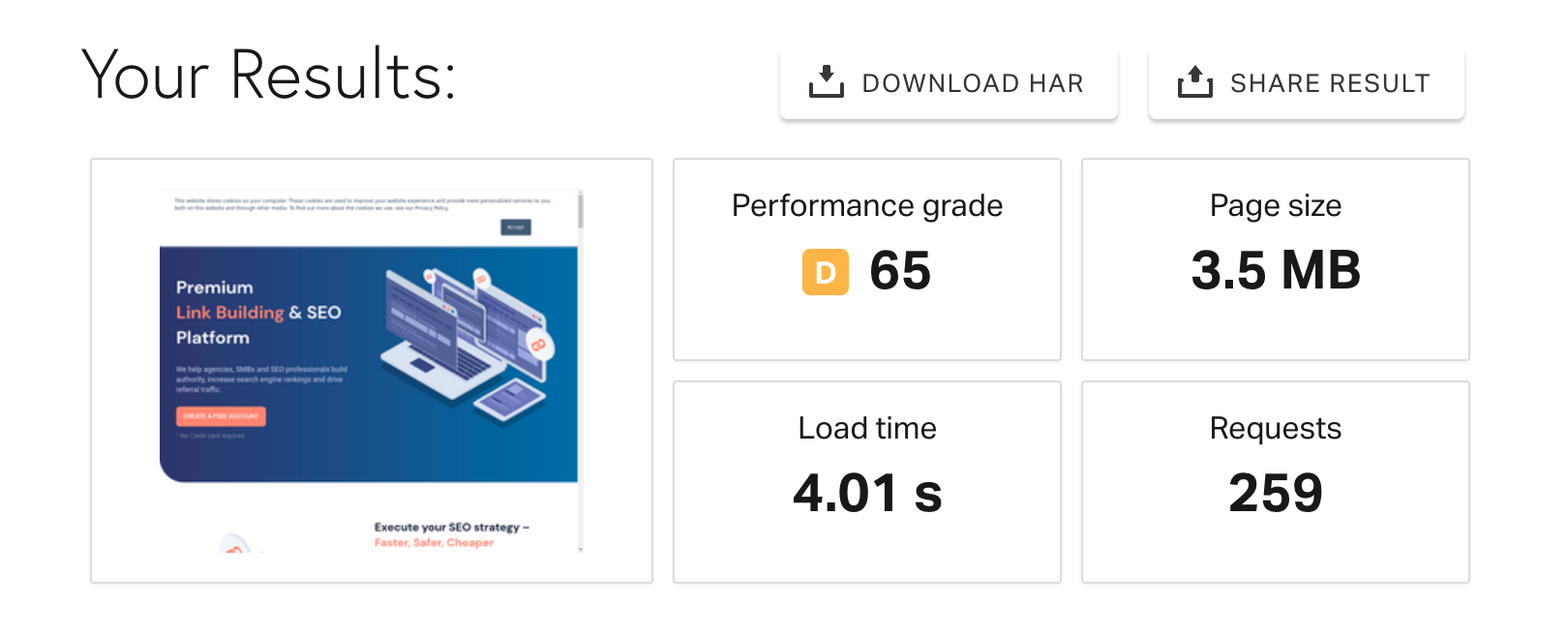
5. Optimize your website for mobile
The increasing rate of mobile users is no longer a secret. A report from Statista revealed that there are 7.33 billion smartphone users, which will continue to grow. That's more than enough reason to make sure your website is mobile-friendly.
This strategy improves readability and allows users to navigate through the website easily. Here are some techniques you can use:
- Make sure your website has a responsive design.
- Provide autocompletion for form fields.
- Optimize images and videos for mobile devices.
- Improve the size of call-to-action buttons.
- Reduce the number of ads on your website.
A mobile-friendly website makes the overall experience more pleasant and even increases conversion rates. Stick with these tips to deliver an exceptional mobile user interface.

6. Consider structured data
Let's put it this way: Search engines need a way to interpret what's on your website. That's why it helps if you mark up the content with structured data. It's like a cheat code for SEO, allowing crawlers to understand the context and purpose of your content better. Above all, it can make your web pages stand out and appear in rich results such as carousels and knowledge panels. How cool is that?
There are different types of structured data you can use. The most common ones include:
- Schema.org: Most searches recognize schema.org as the standard for structured data. This supports a variety of different content types, from articles to products and reviews.
- JSON-LD: Used mostly for product pages and local businesses. The code is placed within the page's HTML and can provide information on business hours, location, contact details, and more.
- Microdata: A form of embedded data that can describe any content on the page.
- RDFa: This is similar to microdata and provides more flexibility for highlighting key aspects of the content. You can use it to refer to individuals, places, and events.
Structured data has greater click-through rates, leading to an increase in traffic and revenue. Implement this technique into your SEO plan, and you'll maximize your site's potential while minimizing the impact of algorithm updates.
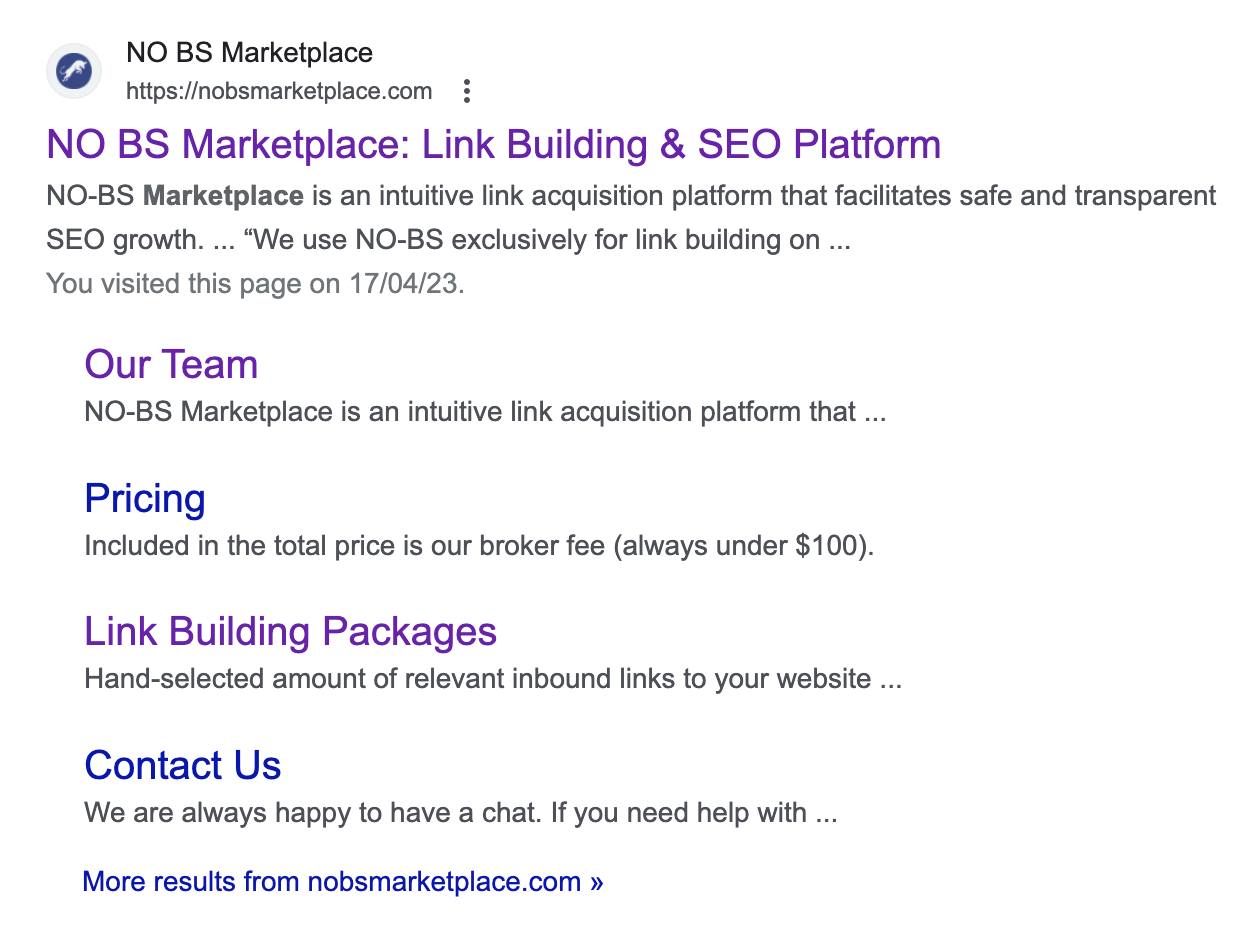
7. Submit a sitemap to search engines
Though submitting a sitemap to search engines isn't strictly required, it offers several benefits. A sitemap is a file that lists all the URLs of your website, providing search engines with a structured roadmap to crawl and index your content.
When setting up a sitemap, consider the following factors to ensure optimal results:
- Format: Use the standard XML format for your sitemap, which is the most widely accepted and supported by search engines.
- Structure: Organize your sitemap hierarchically, grouping related URLs under the same parent to reflect your website's layout.
- URL inclusion: Include all important and publicly accessible pages, but exclude pages you don't want to be indexed, like duplicate content or pages with sensitive information.
- Clean URLs: Make sure to include canonical URLs (i.e., preferred versions) and avoid including URLs with session IDs or unnecessary parameters.
- Prioritization: Assign priority values (between 0.0 and 1.0) to your URLs to indicate their relative importance, with higher values signaling higher priority to search engines.
- Update frequency: Specify the update frequency for each URL to inform search engines how often they should revisit the page.
- Last modification: Include the last modification date for each URL to help search engines understand when a page was last updated.
- Sitemap size: Keep individual sitemap files under the recommended size limit of 50,000 URLs and 50MB uncompressed. If your website is larger, use a sitemap index file to reference multiple sitemap files.
A sitemap can help you find the weak points in your SEO strategy. Remember to validate it before submitting it to search engines and monitor its indexing status regularly to address any issues that may arise.
[caption id="attachment_21290" align="aligncenter" width="1086"]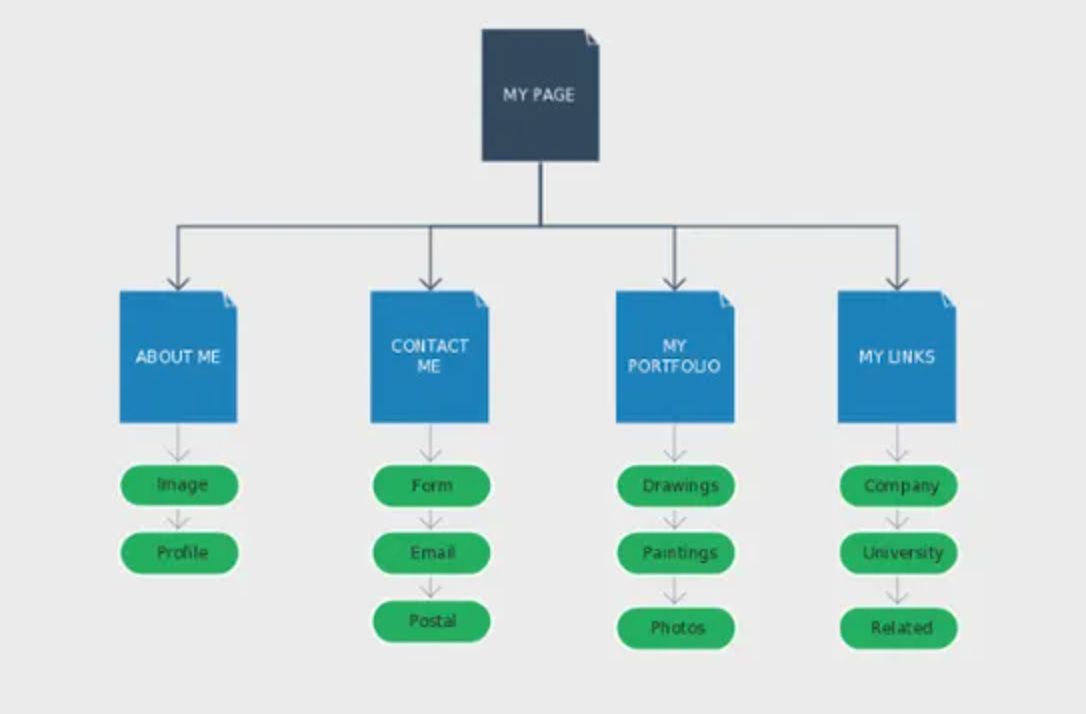 Image Source: Creately[/caption]
Image Source: Creately[/caption]
Conclusion
Just like with photographer enthusiasts, taking all the right steps beforehand can make the difference between good vs a masterpiece.
As technology advances and search engines become smarter, SEO strategies must evolve. So, follow the guidelines outlined in this article, and you'll be well-prepared for the future of SEO.
